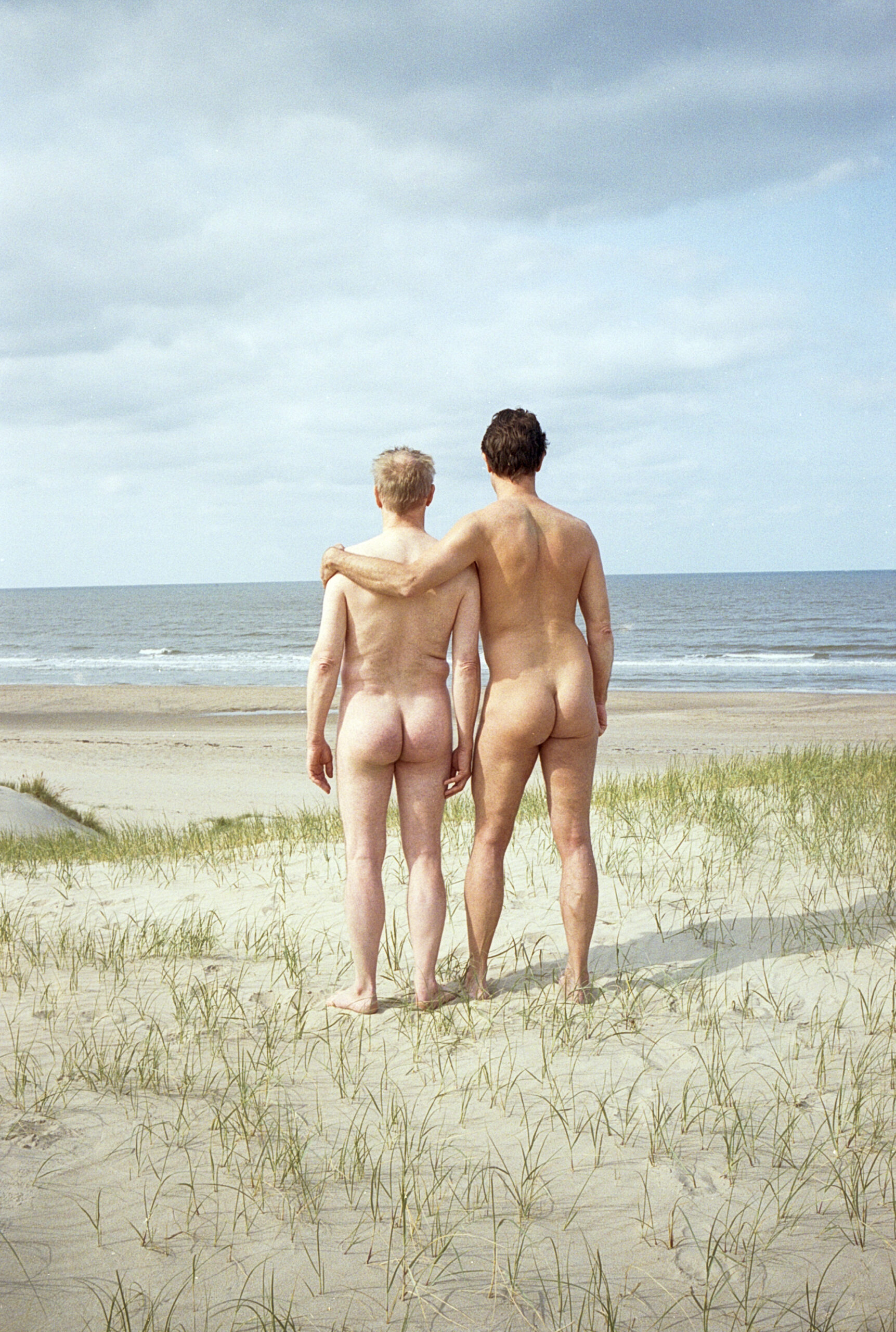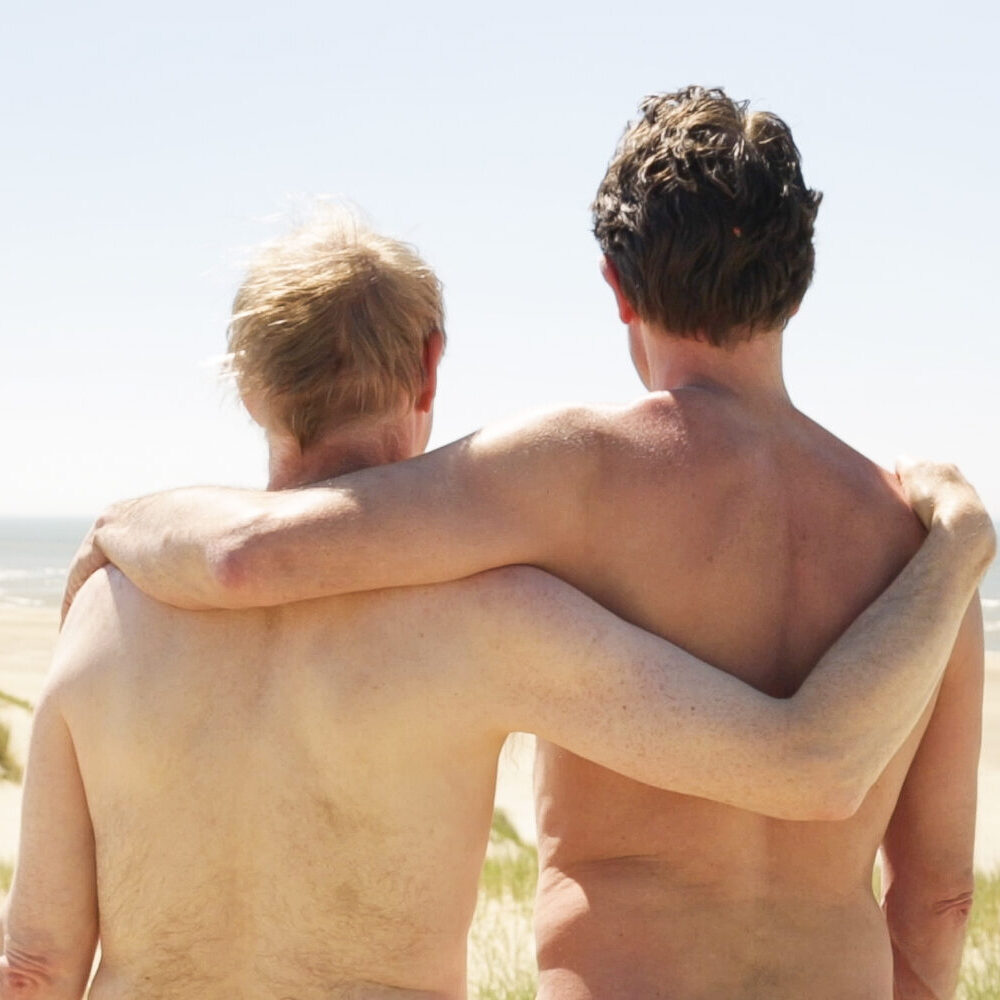Touch plays an important role in our health, emotion regulation and the shaping of social relationships. I am fascinated by the fact that in many cultures, touch seems less accepted for men than for women. If touch is so important to our emotional development, shouldn’t we redefine how we look at touch between men?
The project ‘Hug me’ is an exploration of non-sexual touch between men. As an extension of this video installation, I interviewed various people about touch from a personal, professional and cultural perspective. The interviews have been processed into a book and show how social and cultural norms influence our view of touch. To buy this book, click on the button below and send me an e-mail.
This project was supported by:



Shouldn't we redefine how we look at male touch?
Film stills from the video installation
In the video installation, you see three videos in which two naked men perform different actions on a beach. You see them putting sunscreen on each other’s bodies, and in a second video they try to hold a ball between their bodies. In a third video, the men are embraced as they talk about how they feel about this. The quiet background noise from the beach gives the scene a very relaxed vibe that almost makes you wonder why we don’t see this more often.
The video installation
Publication
Book: Perspectives on touch
In addition to the video installation, I made a book about social and cultural perspectives on touch. I interviewed several people from different backgrounds and asked them how they grew up with touch, how the social and cultural context influenced their experience of touch and how they deal with touch in their profession. Editor: Jessie van der Berg. Designer: Dee Vasilevskaia.
“I give hugs to my gay friends. But there is a difference between straight men in my inner circle and those outside the inner circle. Within my inner circle, touching is normal. But outside this inner circle, I avoid physical contact with straight men because it just saves you a lot of trouble. If I give them a hug, they may think I want to hit on them. Even if they’re not homophobic, I think it’s still not common for straight men to cuddle, so I just don’t do that to avoid problems. I would say that straight men, who are confident about their sexuality, don’t mind touching other men
K. is an artist, originally from Malaysia but lives and works in the Netherlands
Learning through touch is a natural thing, but it has become a foreign thing.
“We think touch is a singular sense, but it is not. Touch is unique in the sense that our brain is incredibly active. If you look at for example acoustics, there is a sound wave that our brain takes as a signal that it will process. It is a singular source with a singular type of data coming in. Touch is not like that. Touch is bidirectional. We need to put effort into whatever we are touching to start to understand it.”
D. is a haptic expert with a background in haptic science. He is currently working as a sex toy developer in Germany
“I know that my dad loved us all, but I don’t remember seeing him hug my brother. They had this camaraderie of doing things together. They were discussing, sitting and paving a life together and stuff like that. But I don’t remember seeing them hug. And if they did, most likely they did it in the absence of us as females. I still think that losing my dad was part of losing my brother, because that just happened a year before. I created this memo book, and it was really sad when I saw what my dad wrote on his page to my brother, because all the things he wrote he never expressed to us. It was heartbreaking, I could feel the love between them. But hug no, touching like ‘you are my boy’, yes I have seen that.”
P. is a counselor in a youth detention. She was born in Zimbabwe, has lived in South-Africa and Sweden and is now living in the Netherlands.


